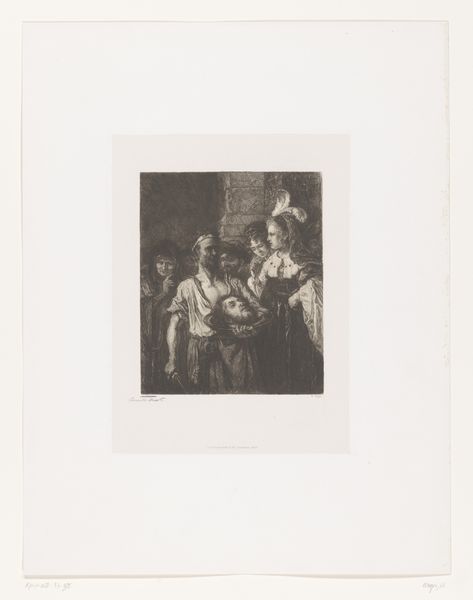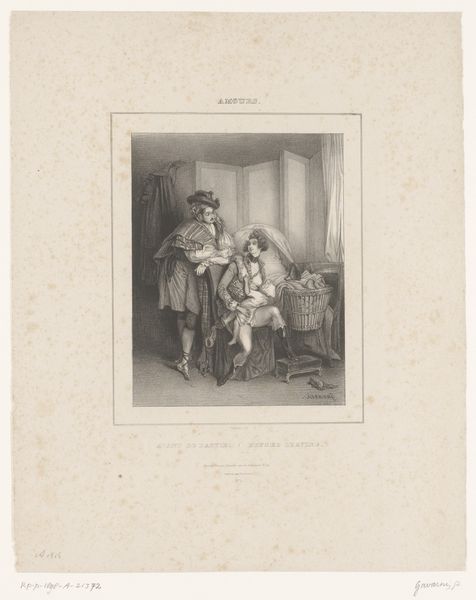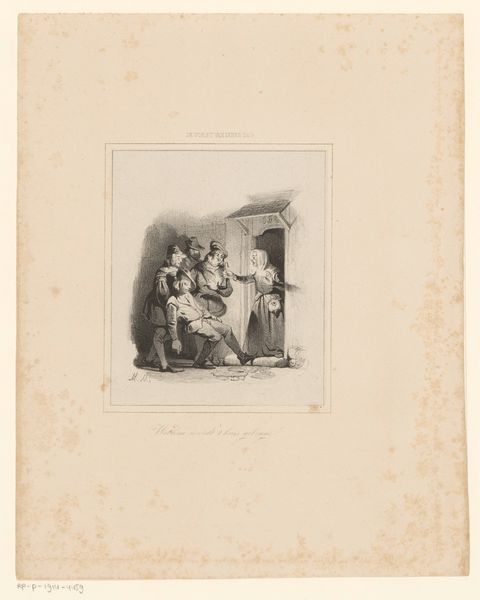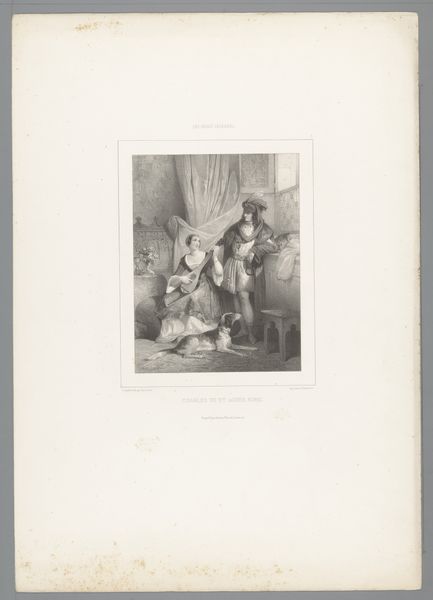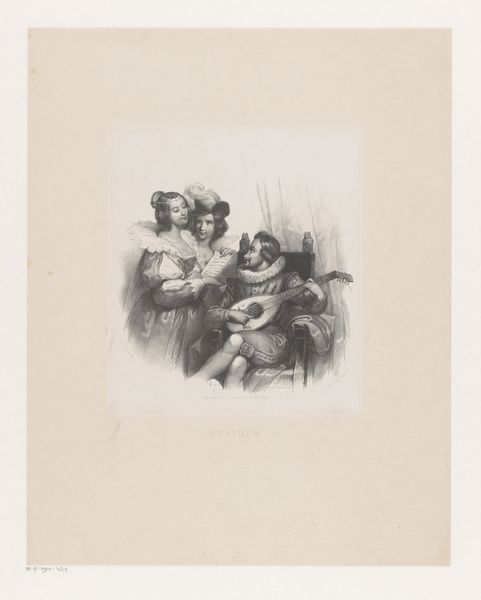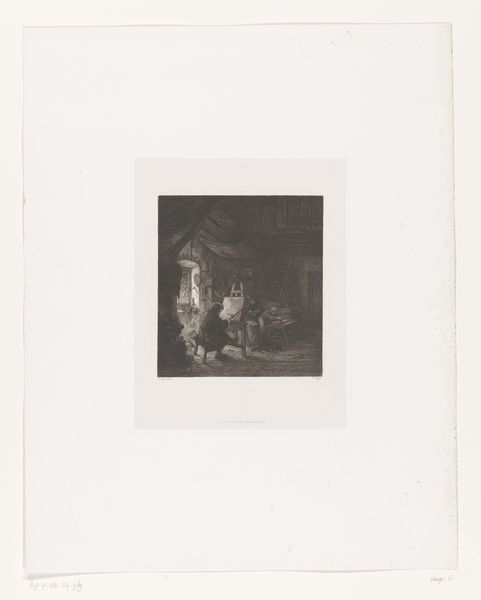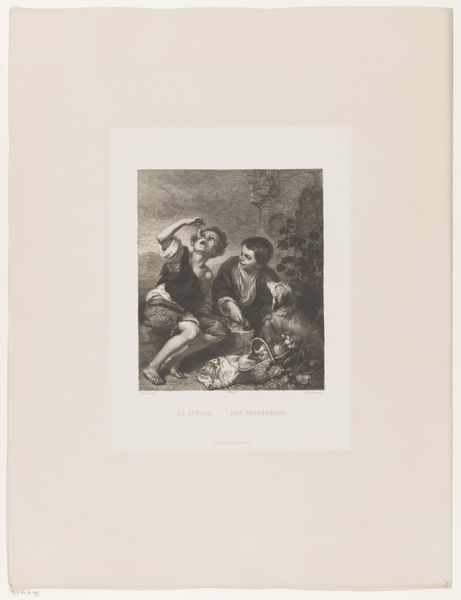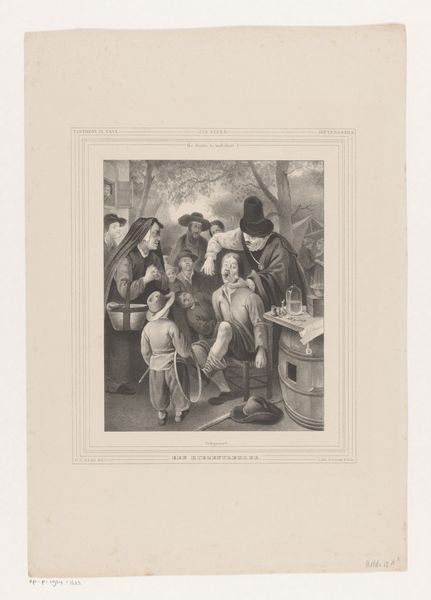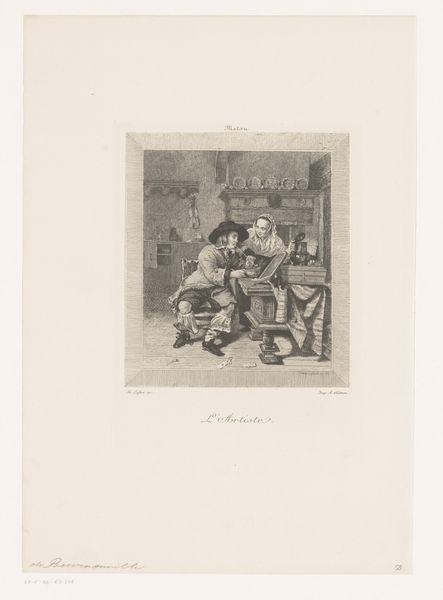
Dimensions: height 386 mm, width 292 mm
Copyright: Rijks Museum: Open Domain
Johann Leonhard Raab made this print, Dobbelende Kinderen, using etching and engraving. In it, three children are crouched on and around a stone plinth, playing a game of dice, seemingly oblivious to the world. The image creates meaning through its echoes of the Italian Renaissance, which was becoming popular in the 19th century. Consider the classical architecture and the children’s clothes which reference antiquity. Raab was German and the image was made when German national identity was being consolidated through institutions like museums and art academies. This image presents an idea of German identity that is based on an idealised notion of childhood and a reverence for the art of the past. As art historians, we have the tools to understand the image better. We can research the history of German art institutions and the growth of nationalism in 19th-century Germany to understand the social context of the artwork. Remember that the meaning of art is always contingent on its social and institutional context.
Comments
No comments
Be the first to comment and join the conversation on the ultimate creative platform.

